Duets: student and artist-mentor exchanges
One of the two main components of a student’s course of study in the MFA-VA program at Vermont College of Fine Arts is a semester-long studio project in which the student develops and/or challenges specific aspects of their art practice under the guidance of an Artist-Mentor.
The VCFA Artist-Mentor network is comprised of prominent contemporary artists who mentor students individually, during the semester. With over 1500 Artist-Mentors across the United States and Canada, VCFA students are ensured mentorship with a different Artist-Mentor each semester.
Student: Jessica Oleksy (S 23)
Artist-Mentor: Ghazaleh Avarzamani
Ed. note: The following interview was conducted in December 2021 during Jessica’s 1st semester in the VA Program.
Studio and VC Project Title – Exploration of Borders: Allocentric Enculturation of Ecological Systems
My original Visual Culture research was based on the U.S./Mexico border in relation to immigration issues but then transitioned to identity in relation to the border. How is our identity defined by the place we live? Since I felt that I could not speak from my own perspective without really knowing who I am as an artist specifically, I incorporated a plant’s visual perspective of what a border looks like. By doing so the work became instantly more relatable to the average viewer vs. the projects I was working on prior to my first meeting with my Artist-Mentor.
Ghazaleh Avarzamani (born in 1979, Tehran; lives in Toronto, Canada) is a multidisciplinary artist with focus on dominant power structures; By considering a range of spaces and methodologies for interactivity and play she explores the opposing ideas about the purpose of education, these considerations include reflections on games and their pre-designed educational purposes. Her work investigates how official historical narratives are constructed, and the hierarchies behind the ‘voice of authority’. In her practice she is creating visual narratives that are a simultaneous deconstruction and reconstruction of time (history) and space (geography).
Avarzamani graduated from the Central Saint Martins in 2013. She has exhibited at the Museum of Contemporary Art, Toronto, ; Aga Khan Museum, Toronto; Vestfossen Kunstlaboratorium Museum, Norway and many more.
Is there a structure to your exchanges?
J: There is a little bit of a structure. We usually start with me presenting what I am currently working on, where I am as far as each project goes. That’s usually where the conversation starts.
G: There is a structure but it’s organic. We started by trying to understand where Jessica is and narrowing down and articulating her thoughts and interests. Jessica has a very encyclopedic mind and she has a lot to say. I was trying to help her create a control system, not from me, but from herself, to prioritize things and understand what she wants to say exactly.
Jessica, how have the conversations with Ghazaleh affected your process and thinking regarding your work?
J: I thought I had planned and was well organized but when I presented at the meetings I realized I sounded disorganized and unprepared. From her perspective, Ghazaleh did not see things the way I was trying to portray them. Her feedback gave me clarification on what I wanted to say and where I wanted to go. That process took months to understand and apply to my thought process. It took months for me to actually implement and start to understand where the process was going.
G: I give this example to Jessica and other students: I want to imagine their works in the context of an exhibition or in front of an audience and ask, does what they are saying and working on make sense? There is always a big gap between the statement and the work itself. We try to eliminate this gap by bringing the statement and the thoughts closer to each other.
Jessica has a very poetic mind and has a lot to say but you don’t really see all that in her work. So, we tried to get closer and see how we can visualize her thoughts.
Can you describe a pivotal exchange or moment that helped shift something for you?
J: I think a pivotal moment for me was when I went from working on several projects to one single big project. That allowed me to focus on one thing rather than work on several projects simultaneously.
G: Tell us a little bit about the other works…
J: I had been working on some other projects before starting with an Artist-Mentor because I wanted to have some studio projects going prior to my first Artist-Mentor meeting. And those works were not representative of what I was trying to say but forcing different thoughts on the viewer – they were aggressive and abrasive.
What prompted the shift?
J: A big part of the shift had to do with me trying to find my identity as an artist. I didn’t have that in place. I’m not saying I have that 100% currently, but I am in a better place at the moment. Eliminating that particular subject matter from my work allowed me to develop myself as an artist and truly understand what I was trying to say. It allowed me to bring what I am trying to say and what I am actually creating, together – to be more cohesive. That was definitely because of Ghazaleh’s intervention and her feedback. She recommended several books and other artists for me to check out during that time.
Which books?
J: Man and His Symbols by Karl Jung and On Photography by Susan Sontag. Those are a couple of the books she recommended during the semester.
G: I think one of Jessica’s biggest achievements, and we worked hard to get there, is that she could develop consistency.
J: Yes.
G: She had a lot of different approaches, different techniques, and different projects. There was no thread between any of them. They were more like interests. She was interested in a topic and she created one or two works and then jumped to another subject.
I was really trying to encourage her to focus on one thing, be consistent and then create a body of work.
Maybe in another semester she can go back and open those files and investigate other subjects. Gradually I think we will be able to see the thread between all these projects.
How have you been challenged this semester?
J: Oh my goodness. How much time do you have? I have been challenged from the very beginning of this semester. I believe the purpose of going to a grad program is to be challenged. I was completely open and ready for the opportunity to allow feedback and to implement that feedback, and to allow change to happen. Before I came into the program, I wasn’t completely open and I didn’t really have a structured approach to my creating at all. It was very unstructured. I really needed a decision making process, to really make a plan and implement it.
The subject matter I’ve chosen is extremely difficult to study: identity in relation to the U.S. and Mexico border. When I started incorporating the Visual Culture Research into the project it added a whole other element that really made me look at my identity as a person. And the studio work was something that challenged my identity as an artist. I was being challenged about who I am both as an artist and person. To be an artist you have to be defiant; you can’t be wishy washy about what you want to say because the things you are saying are important.
What role did Ghazaleh play in challenging you?
J: There are so many ways she challenged me. I think the hardest thing to understand for me was the process of elimination – eliminating the excess. For me it was extremely tough to let go of the things that weren’t working and to really focus on the things that were working. Overall, I think that’s what I’ve learned throughout this entire semester. I’m still learning how to implement these things in my decision making process.
Working and focusing on the single 5’ x 10’ piece and putting aside the other things I had been working on allowed me to focus too. It allowed me to develop my process and utilize that process on the additional work I did during the rest of the semester.
G: So many times during our sessions we both agreed that our meetings were more like therapy sessions. It was a very personal journey to go through every aspect of her thoughts and personal aspirations. Jessica is not coming from an art background which in a way is a great thing because she was ready to absorb. What helped during this process as Jessica said: she was super open and very flexible. She is the mother of two and has a lot on her plate. However, every session she had a lot of new works to show and discuss.
I was very concerned with the level of patience in her practice and that’s why seeing her focusing on one project for six months is a big achievement. Eventually, she could focus on one material, one medium and one subject matter and work and work. Through that process she discovered a lot of other things. She went inward and did a lot of investigation into her work. She came a long way and where she is now standing is great. Of course there is a long way to go!
J: Thank you for that.
How has the VCFA Student – Artist-Mentor model informed the way you approach your process?
J: I wouldn’t have made this much progress this rapidly without this type of program. I think a huge benefit is having someone pay attention to what I’m doing, focusing on me. Because when you are in your thoughts it’s very difficult sometimes to get a grasp on how you want to go about approaching something. Having Ghazaleh understand where I was coming from helped me learn how to articulate those ideas, which I’m still learning. I know that throughout the program it’s going to be the same, a continuous learning process. I am grateful I had Ghazaleh as my Artist-Mentor because I do feel she was a really good fit for me for this semester.
What will you take into the next semester from working with Ghazaleh?
J: There are so many things I learned it’s hard to speak to each thing. There are all these layers of decision making and guidance that I received during the semester that I’m going to take with me into the next semester and into my studio practice.
G: It was actually suggested to Jessica to work with me again in the next semester and I really respected the fact that she rejected the idea. I can see that she is excited to work with other artists and bring more challenges to her work.
J: I always thought that my visual culture work would influence my studio work but I think my studio work is actually influencing my visual culture as well. It’s a weird web and interconnectivity of those two experiences. I’m still learning and reading my notes from Ghazaleh. Although we may not be meeting, I am continuing to learn from her as my Artist-Mentor.
Did Ghazaleh help you to think more about how research can exist within your studio practice?
J: We definitely spoke about research and how it is vital to the creative process.
G: In the first half of the semester, our focus was on her methodology and writing her statement, which was very challenging. We were trying to focus on how she could articulate her thoughts. I understand this isn’t an easy process, she had to come back to her statement and update it throughout the semester.
J: At our first meeting I didn’t have that in place, but I was working on it so the next time we met I at least had a starting point. It took me a long time to come up with the statement because it is something I wanted to take with me long-term.
G: For a while she was not making anything – it was all about sticky notes in her studio – a lot of key words she was trying to organize and prioritize and gradually we got those few keywords up on the wall and then she started writing.
J: After I put the keywords on the wall, I eliminated some of them, and utilized what was left to write my artist statement. The whole process is not easy. Being able to talk or write about my artwork is a tremendous improvement for me. I came in without any ability to discuss my art with other people. I’m still learning, but I can at least talk about it and write about it.
What advice would you give a new student who is thinking about selecting an Artist-Mentor?
J: I think making that decision is part of the process. Learning how to go about selecting an Artist-Mentor is part of the whole process of being an artist. I’m pretty much open to anybody but I also understand the program wants someone who is professional and knows what they are talking about.
I started working with Ghazaleh through a referral from one of the faculty. Immediately I was tested, and I’ve had to overcome and work through those challenges. Going forward in selecting an Artist-Mentor, I want somebody who is going to challenge me again.
G: When we started working together, Jess was mainly working on photography and painting. My work, conceptually or in terms of medium, has nothing to do with her practice. I appreciate the curiosity and the courage when students approach someone who has nothing in common with their work. That’s where the challenge starts, and you start going back and thinking about your work conceptually and things evolve.
Is it a challenge for you as an Artist-Mentor as well?
G: It is. When I started with Jessica, I knew she was a painter and I had been a painter for a long time so I knew I could manage that, but also, I was hoping I was going to push her to a new environment – maybe sculpture, maybe installation. But then I realized, through the process of working together, that painting, for now, is really the best medium for her project. I stopped pushing her and we focused on painting.
J: I was grateful that you did because I really wanted to pursue painting. And even though I wanted to paint, I’m glad I was open to other things. I really was grateful for the opportunity to do something I have a passion for and – completely love.
G: Yes, I can see that you were. And surprisingly, although I ditched the idea of pushing her to three dimensional works, I think by the last two sessions of our discussions she intuitively came up with one sculpture piece and it was really exciting. The piece was a continuation of her research and her paintings.
Without me even pushing her, she was just organically following her intuition, so we got to where I was wanting her to go! I’m really excited to see what she is going to do next semester.
Having a mentor is a luxury that most artists, even if you are an established one, will appreciate it to have a win-win situation. As a mentor, I also learn a lot in this process.
J: We are both insanely busy but when we were together, there on the call, you were totally focused, and I was attempting to be focused. I think that calmness – that little bit of a stopping point – where we could revisit what was going on at the time, is what really helped and guided me through the studio this semester.
G: Maybe fifty percent is about art, but a big portion of it is about making relationships and creating a safe space to talk and brainstorm. That relationship is really important. So many times, in between the meeting sessions, we were sharing ideas via emails and a shared google doc.
One of the other things that I really appreciate about Jessica is how she forced herself to engage. I understand that the first few sessions can be traumatizing and talking about yourself or your work might not be comfortable, but she really worked hard on that. And, again, put this in a context of a newcomer in the art world, where every single thing we are discussing is new to her and she has to really go back and digest it all.
J: Thank you – you just made my day. I’m so grateful for Ghazaleh and I’m so grateful for the program. The way it is designed has really worked for me.
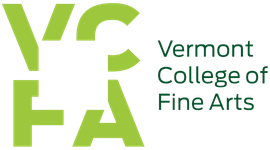
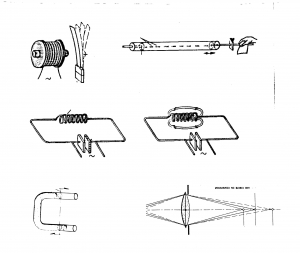
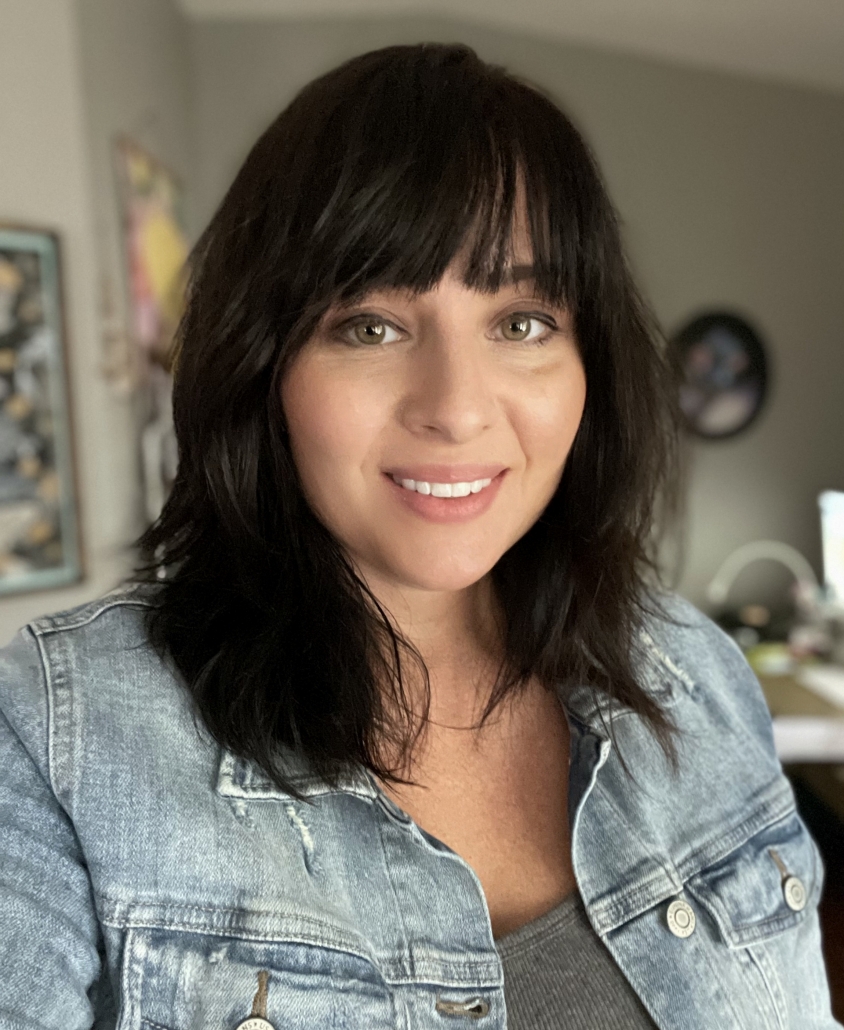
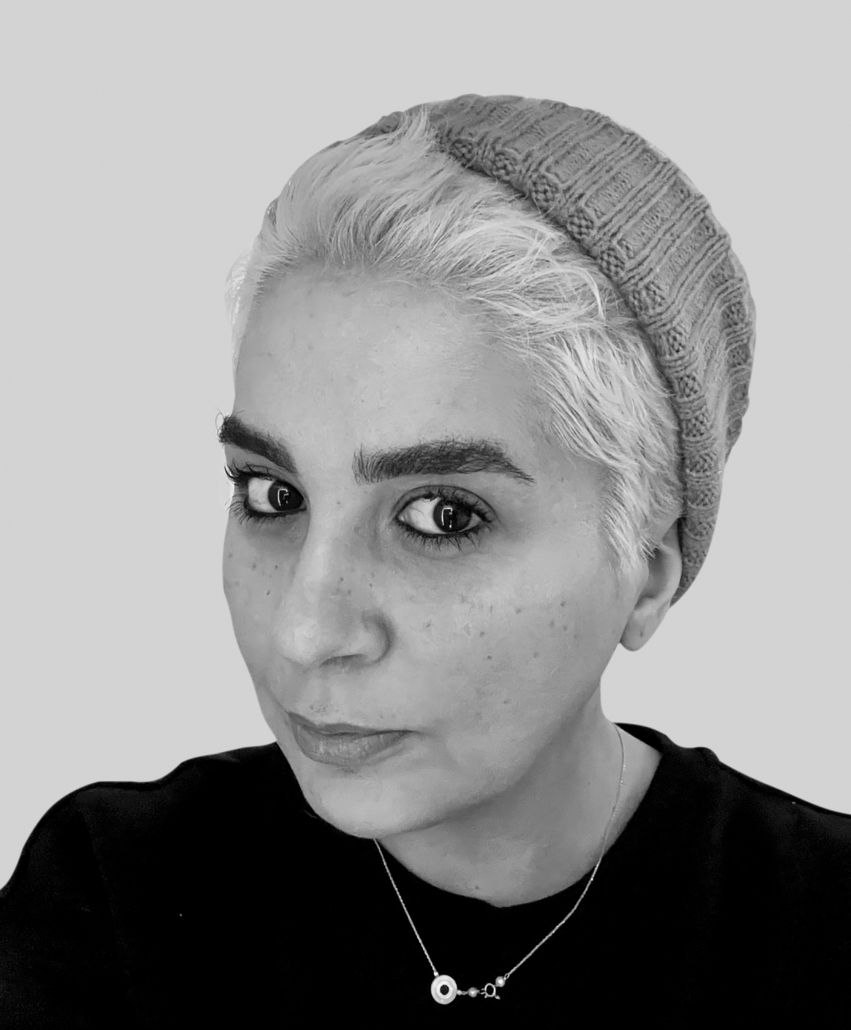
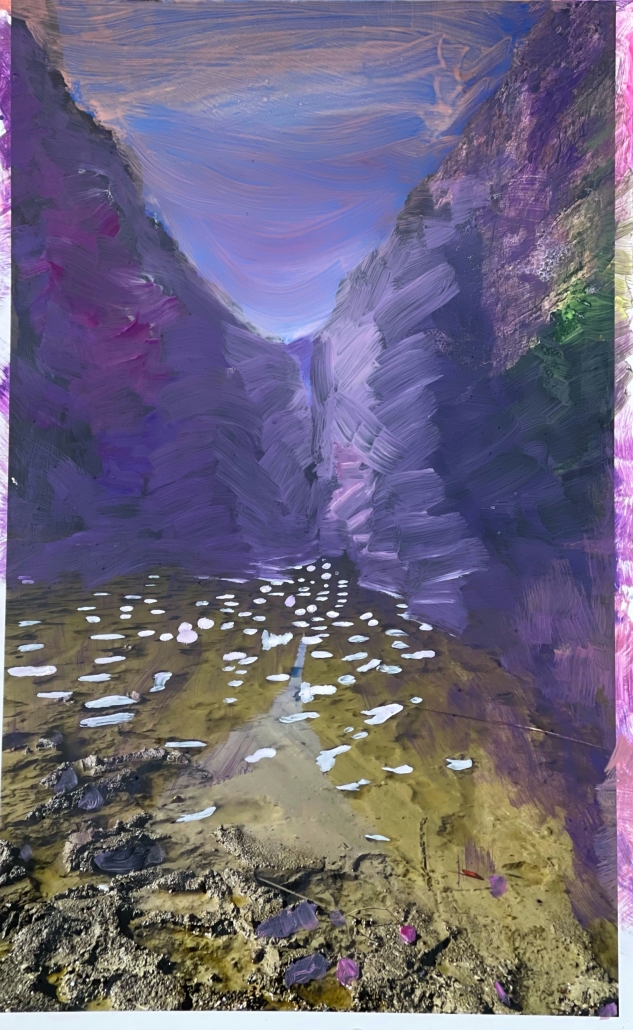
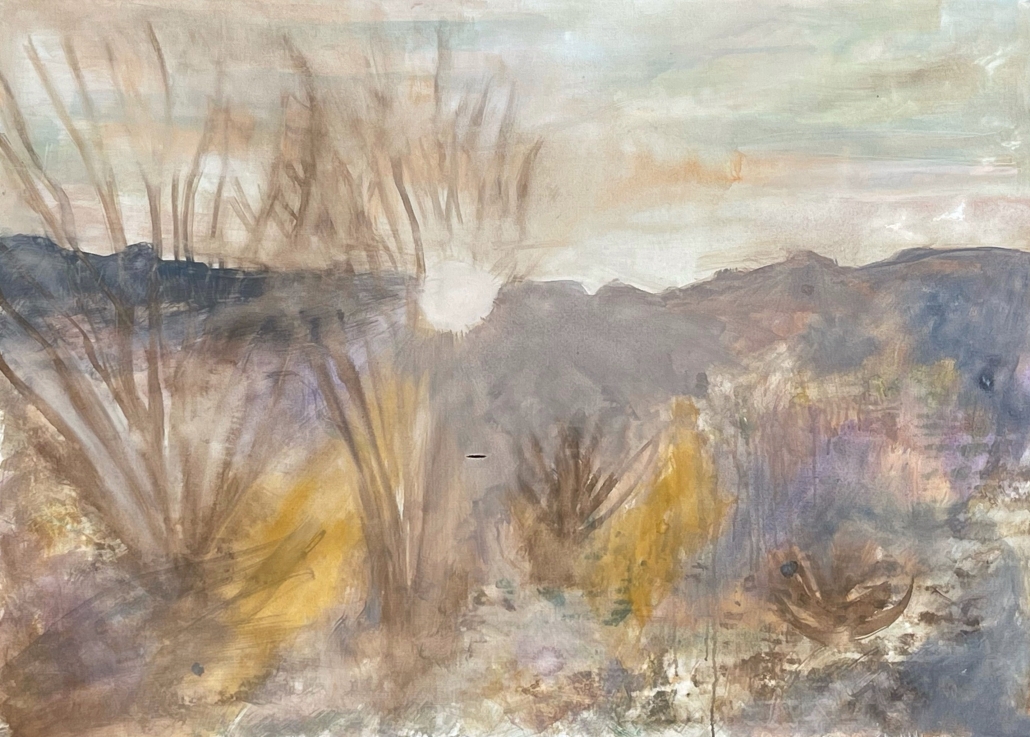
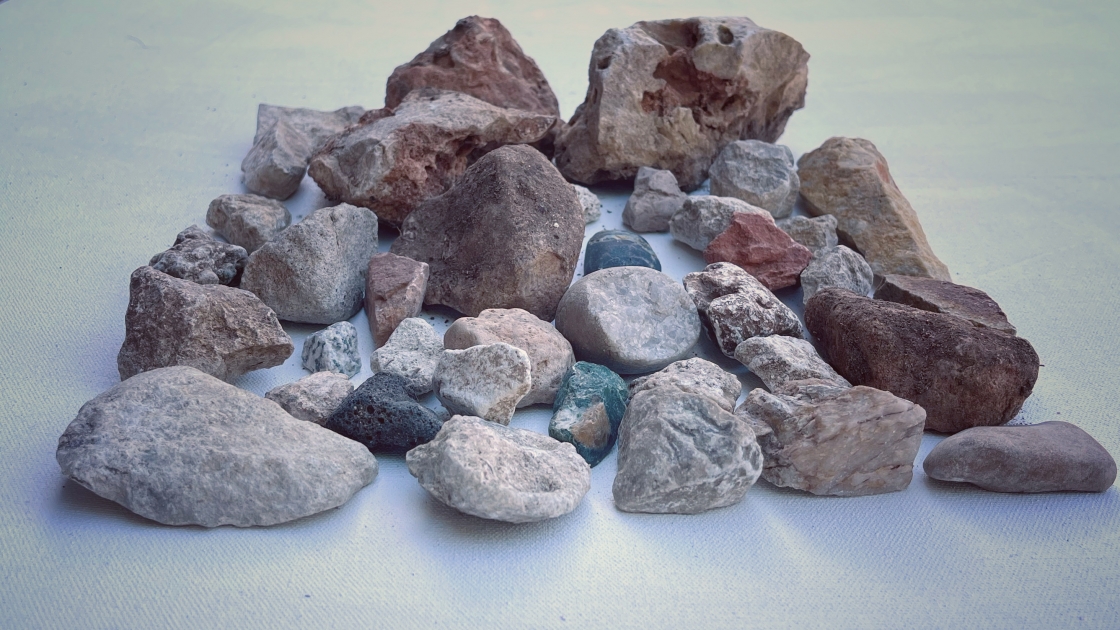
 Nadia Martinez (W 22)
Nadia Martinez (W 22) Gray Space Project with Renee Couture (S 11)
Gray Space Project with Renee Couture (S 11)